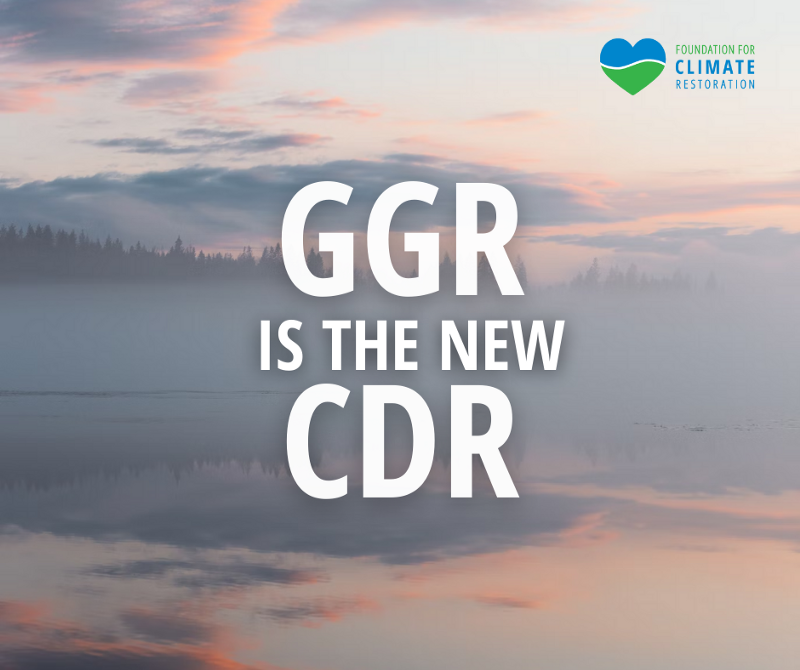GGR is the new CDR
This summer, be sure to stay on top of all the hottest trends. Climate restoration is the new net-zero emissions! Zero warming is the new 1.5°! And, most importantly, greenhouse gas removal (GGR) is the new carbon dioxide removal (CDR).
Is your climate action portfolio (or closet?) full of CDR? Don’t worry! Your well-constructed CDR ensembles will match perfectly with new GGR styles.
Why the shift to GGR?
It’s widely accepted that carbon dioxide is the most important greenhouse gas (GHG) to address in order to avert a climate catastrophe, but it’s far from the only one. In particular, the scientific community has been increasingly concerned about atmospheric methane levels given that methane, while relatively short-lived in our atmosphere, has over 84 times the heat-trapping power of CO2 over a 20-year period. Research indicates that atmospheric methane is responsible for about one-third of radiative forcing (warming) from greenhouse gases.

Methane sources
Atmospheric methane comes from both manmade and natural sources. The main sources of methane emissions from human activity are agriculture (especially cattle and rice paddies), fossil fuels (extraction, transport, and use), and the waste sector (landfills, municipal waste, etc.). Fossil methane is emitted from coal mines, fracking, gas leaks and venting of oil wells. Together, fossil fuels and agriculture account for about 60% of methane emissions. Burning biomass, whether naturally or from human activity, also contributes moderately to methane emissions.
Natural sources of atmospheric methane account for the remaining 40%. But that “natural” source of methane is at risk of rising fast. A massive quantity of methane is stored beneath Arctic ice and permafrost, which release the gas as they melt, and tropical swamps also appear to be a growing source of “natural” methane as the planet warms. In addition, recent research suggests climate-induced forest fires may be depleting the atmosphere of the hydroyxl radical, which is a key chemical in the Earth’s atmosphere that helps break down methane into less potent greenhouse gases, contributing to methane’s longer lived residence in the atmosphere. As our climate continues to warm, we are seeing a steep increase in methane emissions, a possible vicious cycle where methane’s warming causes natural methane releases and warming, which in turn releases yet more methane.
Methane’s role in climate restoration
Climate restoration focuses on restoring safe and healthy atmospheric conditions, and methane could have an outsized impact on getting us there. Just as methane emissions can accelerate warming, its removal can make a major difference in reversing climate change. While methane removal solutions are still in their infancy, a growing number of scientists and policymakers are realizing that greenhouse gas removal can and should help mitigate warming. Watch this presentation from COP26 in Glasgow hosted by the European Commission and Methane Action for more information on why we need to both cut methane emissions and scale up methane removal.
How does this shift affect CDR efforts?
Just as working on CDR does not detract from the importance or attention to CO2 emissions reduction, GGR will not detract from CDR, nor from the necessary emissions reductions of other GHGs (such as methane, nitrous oxide, and halogenated gases). Rather, it will broaden the tent under which CDR sits, allowing for a larger and more powerful portfolio of climate-fixing solutions. For those of you following the work of the Foundation for Climate Restoration (F4CR), you’ll see us begin to use GGR in place of CDR in our communications. Much of our work will still center around awareness and advocacy for CDR, but with this new broader focus, we will begin bringing other GGR approaches into the fold.
Where can I learn more?
F4CR will be providing information and updates to our community as our GGR work expands. You can also visit methaneaction.org for more information.